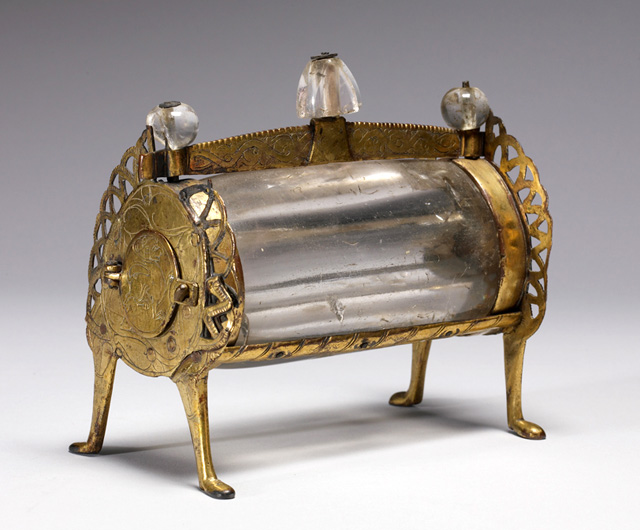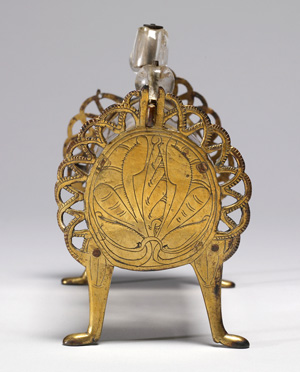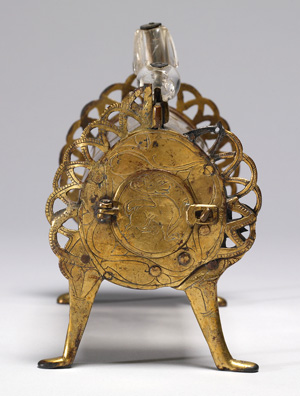Crystal Reliquary
The Walters Art Museum, Baltimore

 Select the image to zoom
Select the image to zoom
This barrel-shaped reliquary consists of a large, cylindrical piece of crystal bored down the middle to create a narrow compartment for a relic. According to medieval lapidaries, rock crystal was a symbol of spiritual purity. Hence the mineral was frequently used to adorn saints' reliquaries from the early Middle Ages onward. In the Walters' reliquary, however, rock crystal is not merely decorative but is used as a chamber. In this way, the relic is revealed for veneration rather than hidden from view as in earlier reliquaries. The rock crystal chamber magnified the relics contained inside, establishing the real presence of the saint. The emergence of this new type of transparent reliquary is to be linked with a renewed interest in visibility during the early Gothic period. Transparent reliquaries satisfied the believers' desire to see the relics without having to handle them. The removal of relics from their containers was prohibited by the Fourth Lateran Council (1215), which sought to reduce the danger of fraudulent exchanges and commerce in relics. During the twelfth century, improvements in techniques for hollowing rock crystal made possible the production of these "roll" reliquaries. The Baltimore example belongs to a group produced in the Rhine region of Germany around 1200. Two other reliquaries of this group are in Geseke (Church of St. Peter) and in the Schnütgen-Museum, Cologne (g.17).






